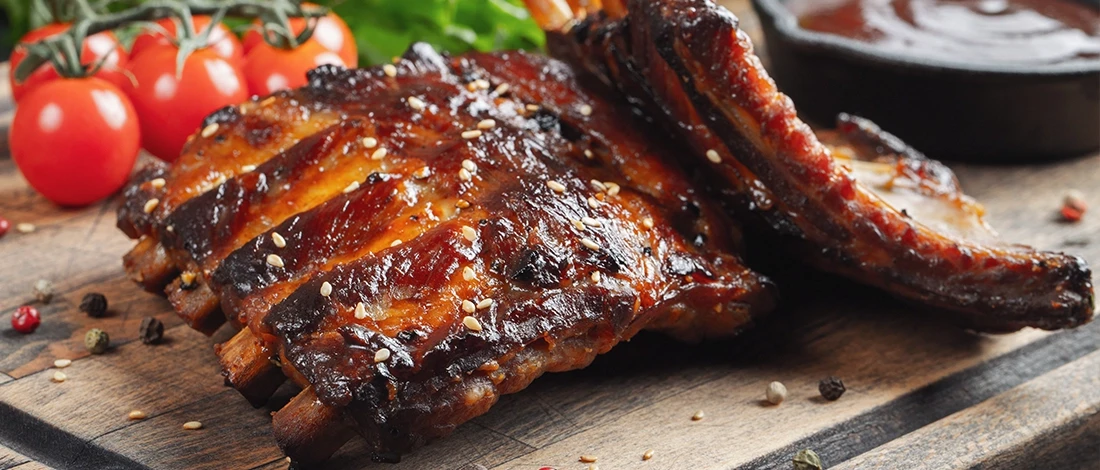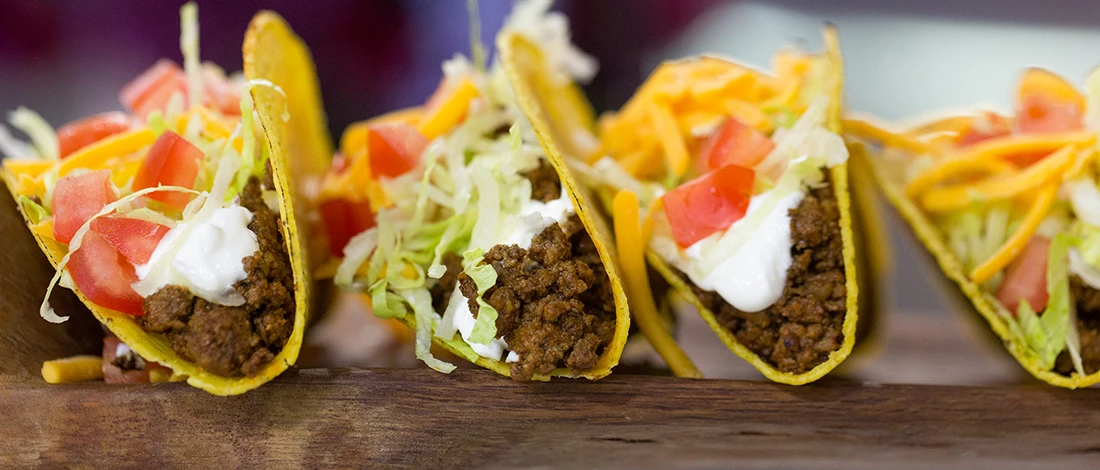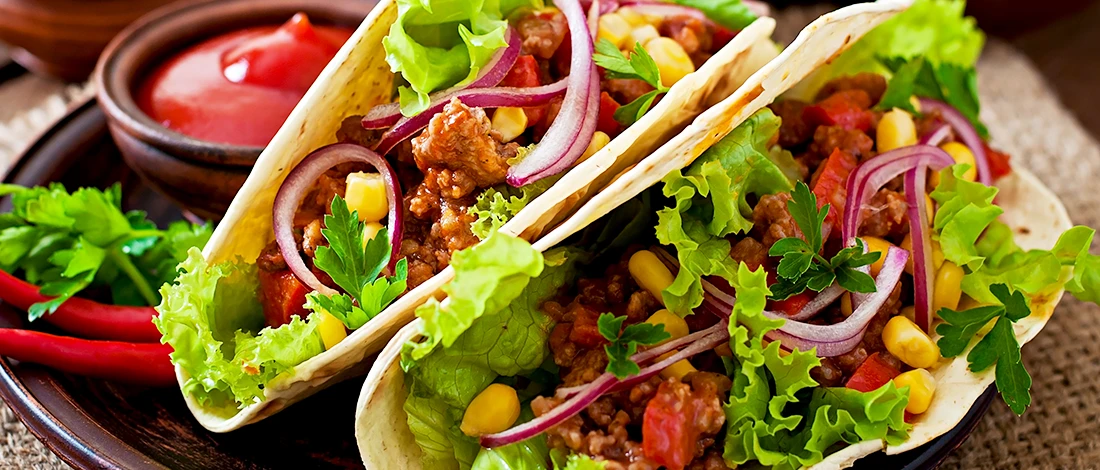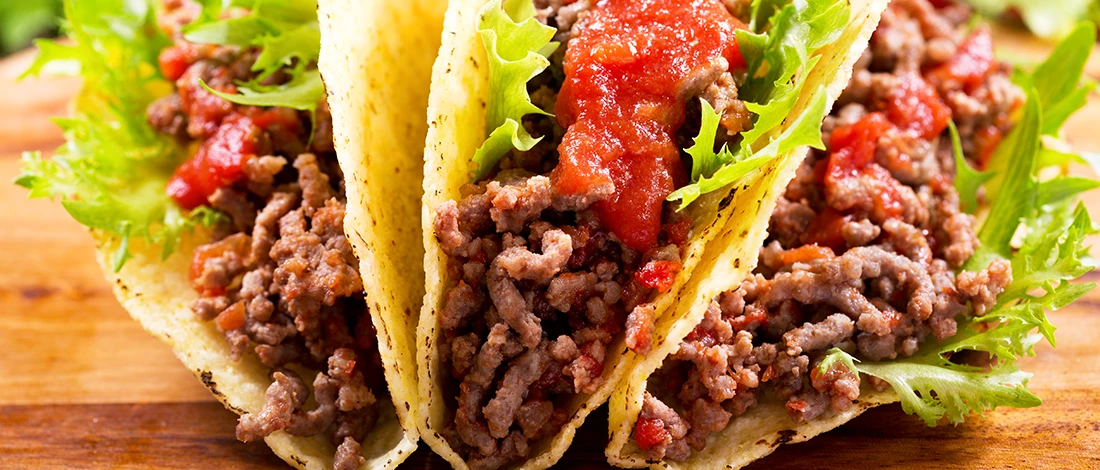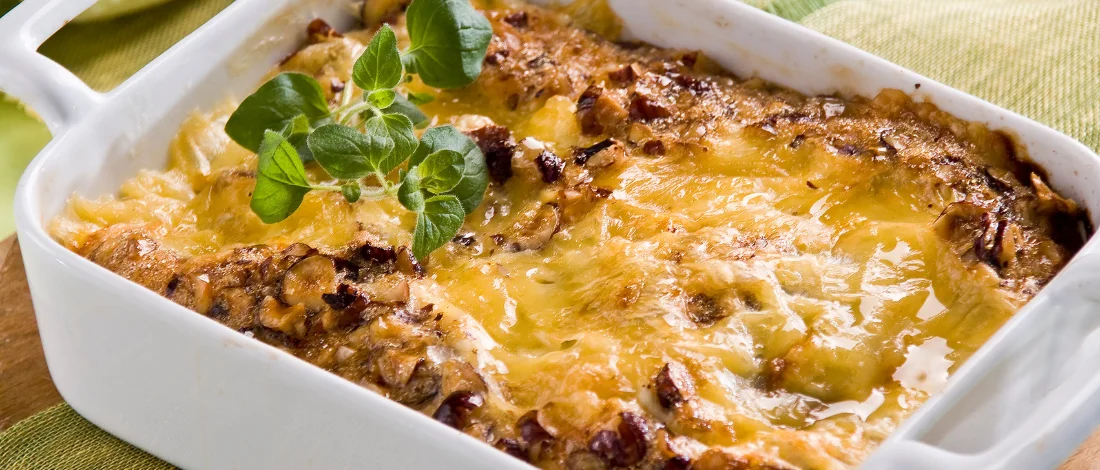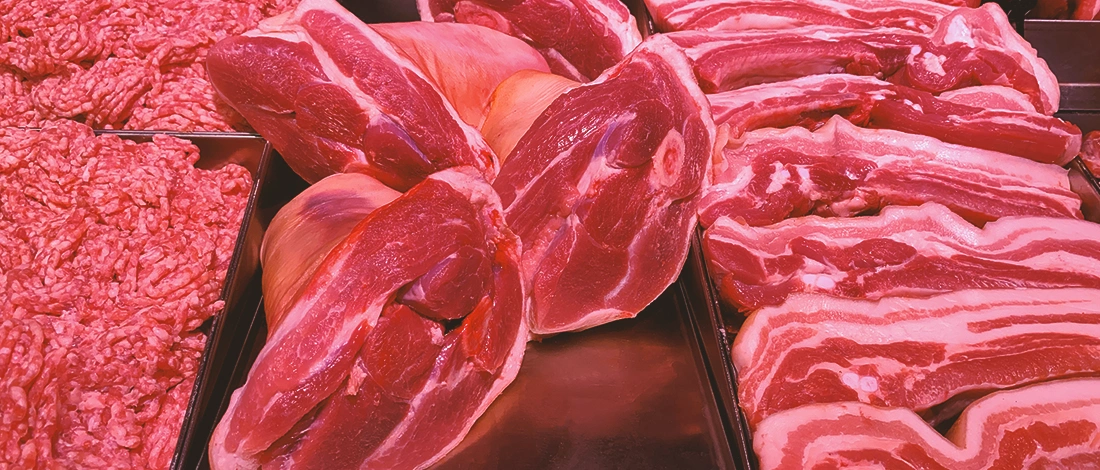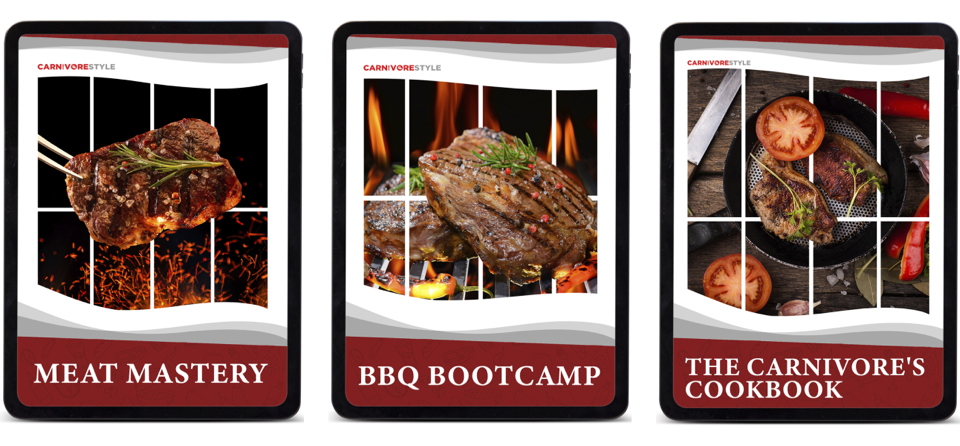As a chef with years of culinary experience, I have cooked and tasted countless variations of tacos and taco meat.
From traditional Mexican recipes to modern fusion creations, I have a deep appreciation and understanding of this beloved cuisine.
In this article, I will share my expertise on the different kinds of taco meat.
It will guide you through the types of tacos, their distinct flavor profiles, and how to create delicious and authentic taco dishes.
Quick Summary
- Some popular types of tacos include carnitas, carne asada, lengua, and pollo asado.
- Chorizo, chilorio, and chori pollo are also commonly used as taco fillings.
- Chicharron, barbacoa, and fish tacos are also popular types of tacos.
Common Kinds of Meat For Tacos

Tacos are a staple of Mexican cuisine and are enjoyed worldwide.
One of the reasons tacos are so popular is that they can be made with a variety of meats.
1. Carnitas
Carnitas is one of the most popular kinds of tacos in Mexico, and it is made by slow-cooking pork shoulder until it is tender, falling apart, and juicy.
The word "carnitas" literally means "little meats" in Spanish, referring to the small pieces of pork that are used to make the dish.
The carnitas tacos pork is shredded and seasoned with various spices, including cumin, garlic, and oregano.
Tacos de carnitas are typically served with chopped onions, lime juice, and cilantro on a warm tortilla.
2. Carne Asada
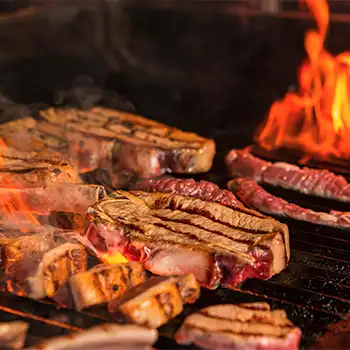
This is another popular type of taco found at a Mexican taco stand.
It is made with meat from the grill, typically flank steak or skirt steak, which is marinated in a mixture of lime, garlic, and chili peppers.
The result is a tender and flavorful meat that is perfect in Mexican tacos.
Carne asada tacos are usually served with chopped onions, guacamole, sour cream, and fresh cilantro on a flour tortilla.
3. Lengua
Lengua, or beef tongue, is a type of meat many Mexicans love.
Although it may not sound very appetizing to some people, it is delicious when cooked properly.
The tongue is slow-cooked until it is tender and juicy, and it is typically served with chopped onions, cilantro, and spicy salsa.
4. Pollo Asado
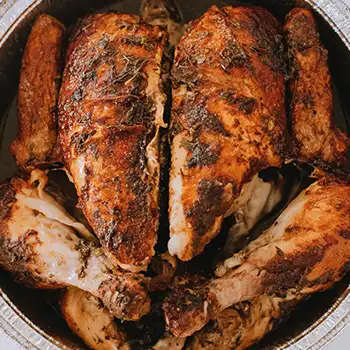
Pollo Asado, or grilled chicken, is a popular type of meat sliced thinly and used in many other Mexican dishes.
The chicken is marinated in lime juice, garlic, and chili peppers and then grilled.
Pollo asado tacos are usually served with chopped onions, lettuce, and fresh cilantro, and they are perfect for those who prefer a lighter and healthier taco option.
Read More: Crock Pot Chicken Taco Meat
5. Chorizo
Chorizo is a type of spicy pork sausage that is commonly used in Mexican cuisine, and it is also a beloved type of meat for tacos.
The sausage is typically made with ground pork and a mixture of spices, including chili powder, paprika, and cumin.
Unlike Spanish chorizo, Mexican chorizo is not cured.
Chorizo tacos are perfect for those who love their tacos spicy and flavorful.
6. Chori Pollo

Chori Pollo is a type of meat that combines two popular taco meats – grilled chicken and Mexican chorizo.
The chicken is marinated in a mixture of lime, garlic, and chilis, and it is then grilled until it is tender and juicy.
The chorizo is cooked separately and then added to the grilled chicken to create a flavorful and spicy taco.
7. Chilorio
Chilorio is a pork dish from the state of Sinaloa that is seasoned with onion, cumin, garlic, chiles, and vinegar, then cooked until tender.
This results in a delicious filling that is perfect for tacos. It has a distinct smoky flavor that will surely please any taco lover.
In addition, the filling can be mixed with potatoes, which adds a nice textural element to the taco.
Types of Tacos

Now that we've looked at some of the most popular sorts of meat, let's examine different types of tacos.
1. Tinga De Pollo Tacos
Chicken tinga tacos are made with shredded chicken cooked in a tomato-chipotle chili sauce.
The chicken is then piled onto soft corn tortillas and topped with diced onions, fresh cilantro, and a squeeze of lime. The result is a tangy, smoky taco.
2. Chicharron Tacos
These tacos de chicharrón are made with crispy fried pork rinds or pork belly that have been simmered in a tangy salsa verde.
The fried pork skin is then placed on a warm tortilla and topped with chopped onion, fresh cilantro, and a squeeze of lime.
The result is a crunchy, flavorful taco with a satisfying texture that is often used as a breakfast food.
3. Barbacoa Tacos
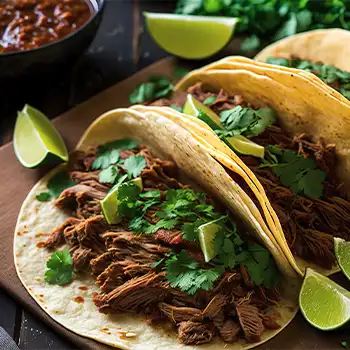
Tacos de barbacoa is a traditional Mexican dish that consists of beef or lamb.
The meat is typically seasoned with chilis, chipotle peppers, cumin, and other spices, then wrapped in banana leaves and cooked in a pit using a slow cook method.
The resulting meat is incredibly tender, flavorful, and an excellent taco filling.
4. Tacos de Pescado
Another popular type of taco is the Tacos de Pescado, which is filled with fried fish.
The fish is usually battered and deep-fried, then served with various toppings, such as cabbage, pico de gallo, and chipotle mayo.
These fish tacos are a great option for those who prefer seafood over meat.
5. Tacos de Camaron

These are shrimp tacos made from shrimp that has been sautéed in garlic, butter, and spices.
The shrimp is then piled onto a fresh corn tortilla and topped with diced onions, shredded cabbage, and a dash of lime.
6. Tacos Al Pastor
Created in Mexico City, al pastor tacos are made with a type of marinated pork cooked on a spit, similar to shawarma or gyro meat recipes.
The pork is typically marinated in chilies, garlic, and pineapple, giving it a sweet and savory flavor.
The meat is then shaved off the spit and served in the tacos al pastor.
7. Birria Tacos

Birria is a traditional Mexican dish typically made with beef or goat meat cooked with a blend of spices and chilies.
The meat is then shredded and served in a flavorful broth perfect for dipping.
Birria tacos are typically filled with fresh cilantro, onion, and a side of broth for dipping.
8. Cochinita Pibil Tacos
Cochinita Pibil is a classic dish from the Yucatan Peninsula, featuring a suckling pig marinated in achiote paste and sour orange juice.
The name "pibil" comes from the Mayan word for "buried," as the tender meat is traditionally cooked in an underground pit [1].
Often served with pickled red onions and habanero salsa, these tacos offer a perfect balance of sweet and tangy flavors with a touch of heat.
9. Tacos de Cabeza
Tacos de cabeza comes from a cow’s head that has been cooked until it is tender and juicy.
Some locations use only a certain part of the head, like the beef cheeks, while others mix all the meat together.
This authentic Mexican taco is usually served with a variety of different salsas, guacamole, and chopped onions.
10. Tacos Árabes/ Doneraki con Pan Árabe
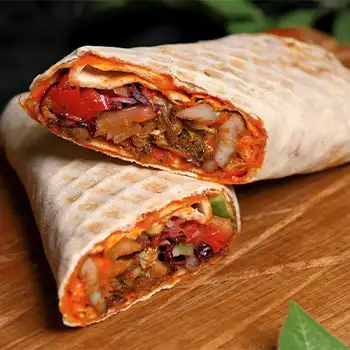
Tacos Árabes, also known as tacos Arabes or Arab tacos, is a Mexican take on a dish from the Middle East, the shawarma.
Thinly sliced pork is marinated in a blend of spices, including cumin, paprika, and garlic, before being roasted on a spit.
The meat is then thinly sliced and served on warm pita bread called pan arabe.
Tacos Arabes are typically topped with onions, cilantro, and salsa.
11. Tacos de Canasta
These tacos are also known as "basket tacos" because they are traditionally served in Mexico City from a basket.
Tacos de canasta are made with warm corn tortillas filled with refried beans, potatoes, or other fillings.
The tacos are then topped with salsa and served hot.
"The beauty of the taco is that you can make it exactly how you like it - spicy, sweet, savory, vegetarian, meaty, crunchy, soft - there's a taco for everyone."
- Jose Andres, Spanish-American Chef
Related Articles:
FAQs
What Is Mexican Taco Meat Called?
Mexican taco meat is called "carne asada," meaning "grilled meat" when used in beef tacos. However, many other types of meats are also used in authentic Mexican tacos, depending on the region and preference of the cook.
What Is Traditional Mexican Taco Made With?
A traditional Mexican taco is made with a warm corn tortilla and filled with grilled or slow-roasted meat, onions, cilantro, and salsa. Additional toppings can include lime juice, avocado, and cheese. However, the ingredients can vary depending on the type of taco and the region of Mexico.
What Is the Most Popular Taco in Mexico?
The most popular taco in Mexico is "al pastor," which features marinated, spit-roasted pork. This taco is often topped with fresh cilantro, onions, and a slice of fresh pineapple. However, other popular taco fillings in Mexican street tacos include carne asada, carnitas, and lengua.
Reference:
- http://www.explorandomexico.com/about-mexico/4/209/

